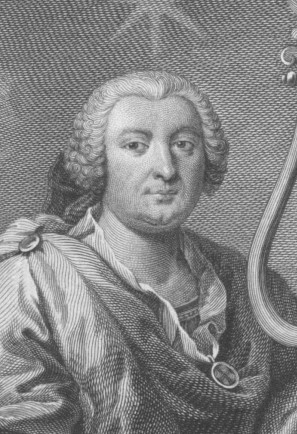LNB autoritātes
AleppID: LNC10-000118787
ViafURL: http://viaf.org/viaf/12492861
DomID: 20868 Iet uz Dom saiti Iet uz Dom xml datiem
IsniID: 0000000080920157
|
|
<ill-get-doc>
<record xmlns="http://www.loc.gov/MARC21/slim/" xmlns:xsi="http://www.w3.org/2001/XMLSchema-instance" xsi:schemaLocation="http://www.loc.gov/MARC21/slim http://www.loc.gov/standards/marcxml/schema/MARC21slim.xsd">
<leader>^^^^^nz^^a^^^^^^^n^^4500</leader>
<controlfield tag="001">LNC10-000118787</controlfield>
<controlfield tag="005">20130128144826.0</controlfield>
<controlfield tag="008">080903nn|adnnnaabn||||||||||^a|aaa||||^^</controlfield>
<datafield tag="024" ind1="7" ind2=" ">
<subfield code="a">0000000080920157</subfield>
<subfield code="2">isni</subfield>
</datafield>
<datafield tag="035" ind1=" " ind2=" ">
<subfield code="a">(VIAF)12492861</subfield>
</datafield>
<datafield tag="040" ind1=" " ind2=" ">
<subfield code="a">NLL</subfield>
<subfield code="b">lav</subfield>
</datafield>
<datafield tag="100" ind1="1" ind2=" ">
<subfield code="a">Seixas, Carlos de,</subfield>
<subfield code="d">1704-1742</subfield>
</datafield>
<datafield tag="400" ind1="1" ind2=" ">
<subfield code="a">Seixas, José Antonio Carlos de,</subfield>
<subfield code="d">1704-1742</subfield>
</datafield>
<datafield tag="400" ind1="1" ind2=" ">
<subfield code="a">De Seixas, Jose? Antonio Carlos,</subfield>
<subfield code="d">1704-1742</subfield>
</datafield>
<datafield tag="400" ind1="1" ind2=" ">
<subfield code="a">De Seixas, Carlos,</subfield>
<subfield code="d">1704-1742</subfield>
</datafield>
<datafield tag="400" ind1="1" ind2=" ">
<subfield code="a">??????, ?.,</subfield>
<subfield code="d">1704-1742</subfield>
</datafield>
<datafield tag="400" ind1="1" ind2=" ">
<subfield code="a">??????, ?????? ??,</subfield>
<subfield code="d">1704-1742</subfield>
</datafield>
<datafield tag="670" ind1=" " ind2=" ">
<subfield code="a">Fandango [skaņu ieraksts], pc1998:</subfield>
<subfield code="b">CD teksta piel. (José Antonio Carlos de Seixas)</subfield>
</datafield>
<datafield tag="670" ind1=" " ind2=" ">
<subfield code="a">Grove music online:</subfield>
<subfield code="b">(Seixas, (José António) Carlos de (b Coimbra, 11 June 1704; d Lisbon, 25 Aug 1742). Portuguese composer and organist)</subfield>
</datafield>
<datafield tag="670" ind1=" " ind2=" ">
<subfield code="a">????? ? ????? ????????? ?????? [notis], 1972:</subfield>
<subfield code="b">(?. ??????)</subfield>
</datafield>
<datafield tag="670" ind1=" " ind2=" ">
<subfield code="a">intoclassics.net:</subfield>
<subfield code="b">(?????? ?? ?????? (1704-1742) ; ??????????, ???????, 18 ???)</subfield>
</datafield>
<datafield tag="856" ind1="4" ind2="0">
<subfield code="u">http://viaf.org/viaf/12492861</subfield>
<subfield code="y">VIAF ID</subfield>
</datafield>
<datafield tag="915" ind1="0" ind2="3">
<subfield code="a">20080903.03gabriell</subfield>
</datafield>
<datafield tag="915" ind1="0" ind2="3">
<subfield code="a">r20130128.03dainav</subfield>
</datafield>
</record>
<session-id>TG6KJPM7REF77VRC2CXKDQHJ3BV8S1SERS391GXHRXIMXSY7UF</session-id>
</ill-get-doc>
Carlos_Seixas

- José António Carlos de Seixas (.mw-parser-output .IPA-label-small{font-size:85%}.mw-parser-output .references .IPA-label-small,.mw-parser-output .infobox .IPA-label-small,.mw-parser-output .navbox .IPA-label-small{font-size:100%}Portuguese: [ˈkaɾluʃ ˈsɐjʃɐʃ]; 11 June 1704 – 25 August 1742) was a pre-eminent Portuguese composer of the 18th century. An accomplished virtuoso of both the organ and the harpsichord, Seixas succeeded his father as the organist for Coimbra Cathedral at the age of fourteen. In 1720, he departed for the capital, Lisbon, where he was to serve as the organist for the royal chapel, one of the highest offices for a musician in Portugal, a position which earned him a knighthood. Much of Seixas' music rests in an ambiguous transitional period from the learned style of the 17th century to the galant style of the 18th century.[1]
- Seixas was born in Coimbra to Francisco Vaz and Marcelina Nunes. From a young age, he was surrounded by musical activity; his father served as the cathedral organist, and the flurry of musical activity in the local monastery of Santa Cruz had an equally important role in his musical training. In 1718, a few days before his father's death, Seixas succeeded his father as cathedral organist. Two years after, in 1720, he moved to Lisbon to take up his new position in the court of John V of Portugal as court organist and harpsichordist.[2]
- Citing his elegance and agility on the keyboard, he was a favorite teacher of many noble families, including the family of Luís Xavier Furtado de Mendonça [pt], the Viscount of Barbacena, where he gave harpsichord lessons to the Viscount's wife and daughters in exchange for artistic patronage.[3] In Lisbon, Seixas met Italian composer Domenico Scarlatti, who was working in Portugal from 1719 to 1728 as appointed director of the court cathedral. In an account by José Mazza in his Diccionario biographico de Musicos portugueses e noticia das suas composições of 1780, the king's brother, Dom António, arranged for Scarlatti to give Seixas harpsichord lessons. Scarlatti, immediately recognizing Seixas' talent, replied, "You can give me lessons."[2]
- In 1731 he was married at age twenty-eight to D. Maria Joana Tomásia da Silva, with whom he had two sons and three daughters. He was knighted in 1738 by the king, inducted into the Order of Christ. Four years later, in 1742, he died of a rheumatic fever, and was buried in the Santa Maria Basilica in Lisbon.[4] [5]
- Seixas' keyboard works were written for a variety of instruments, including the organ, harpsichord, and the clavichord. Stylistically speaking, however, his sonatas showcase a range of musical styles: some are exemplary of a Baroque toccata; some are firmly in the galant style; some are clearly influenced by the German Empfindsamer Stil (literally 'sensitive style'). Despite rarely, if ever, traveling outside of Lisbon, his work also includes various geographical styles, such as the German Mannheim school, the French minuet, and the Italian style as composed by Scarlatti, his colleague and contemporary.[1] Santiago Kastner, Seixas' biographer and editor of his pieces, describes Seixas' works as "unoccupied" with a particular form, and given over to frequent improvisation.[4] Much of his work was destroyed in the earthquake that devastated Lisbon in 1755. Only three orchestral pieces and around one hundred keyboard sonatas out of over an alleged seven hundred survived, plus a handful of choral works for liturgical use (much more conservative than what one would expect from his instrumental music).
- Macario Santiago Kastner published collections of the sonatas in Portugaliae Musica.